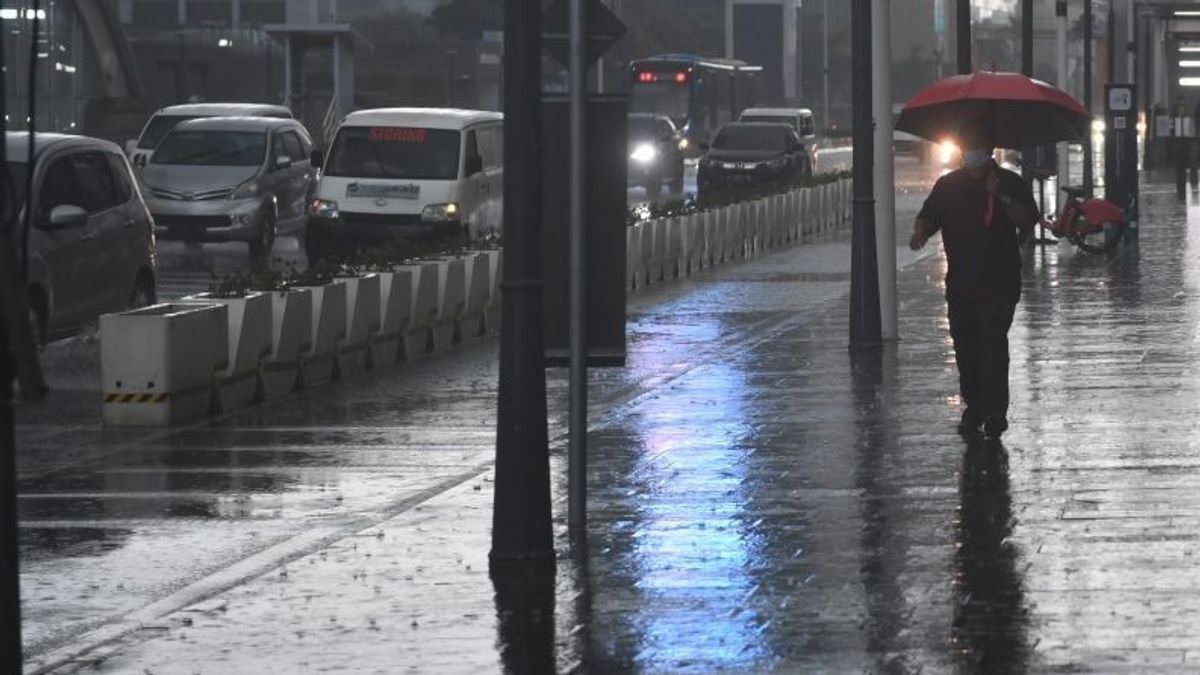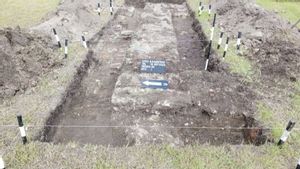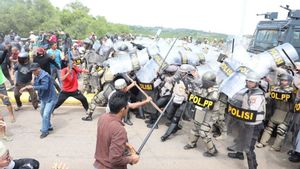JAKARTA - Rain that occurs through weather modification technology operations is considered effective in reducing pollutants indices that pollute the air in Jabodetabek.
"The most effective rain sheds the air quality index for the better, but this cannot happen every day," said BRIN Weather Modification Technology Management Laboratory Coordinator Budi Harsoyo quoting Antara, Saturday, September 23.
During the operation of weather modification technology which took place from August 24 to September 10, 2023, the frequent rains occurred in the Bogor area. This condition is normal because Bogor is an area with high topography, so that potential clouds formed in the Bogor area are almost every day present because it is formed by an orographic process. The orographic process is the process of cloud formation that occurs because it meets high topography, so there is a lifting of air mass and there is a convective cloud or cumulus cloud. During the dry season, the clouds formed have little water vapor content. This condition can be seen from the humidity profile of the air in the very dry upper layer, so that if it becomes rain, then the rain only with light intensity and short duration.The occurrence of quite large rain occurred on August 20, 2023 in the Bogor region up to Depok. Then, heavy rain also occurred on August 27, 2023 to the South Jakarta area and expanded up to Soekarno-Hatta Airport. Rain distribution is concentrated in Bogor City because almost every day there were cumulus clouds formed due to orographic processes. The most significant rain results occurred on August 27, 2023 reached 64.2 millimeters and on September 8, 2023 reached 45.6 millimeters. On August 27, 2023, high intensity rain in Bogor even up to Jakarta succeeded in lowering PM2.5 concentrations. The data of air quality index monitoring stations in Cibinong, Bogor Regency, Bogor Province, showed that before the rain fell concentration of PM2.5 reached 97 micrograms per cubic meter. After heavy rain for 1.5 hours, the PM2.5 concentration changed to 20 micrograms per cubic meter. The heavy rain that occurred also lowered the concentration of PM2.5 pollutants in Sereal Land, Bogor City, West Java, from the previous 87 micrograms per cubic meter to 12 micrograms per cubic meter. Meanwhile, the Jakarta, Bekasi, and surrounding air quality indexes did not improve because of the rain that had fallen at that time light intensity.
اقرأ أيضا:
On September 8, 2023, quite high rainfall also occurred in Bogor, but Jakarta did not get rain. Rain at that time also lowered PM2.5 concentration, especially in the Bogor area. Budi revealed that although weather modification technology can reduce rain which has an impact on improving the air quality index, this technology should not be used as a permanent effort. According to him, the root of the problem of air pollution in Jabodetabek must be found so that similar incidents are not routinely repeated every year. "Why is this technology being used? Because at least it is an effort that can quickly make the air quality index better," concluded Budi.
The English, Chinese, Japanese, Arabic, and French versions are automatically generated by the AI. So there may still be inaccuracies in translating, please always see Indonesian as our main language. (system supported by DigitalSiber.id)












